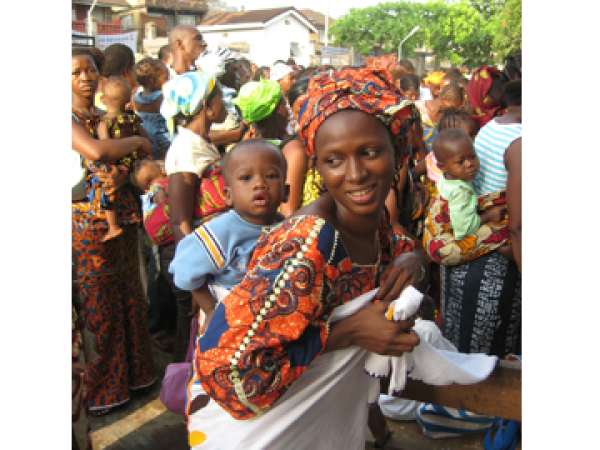Making pregnancy safe: Is South Africa on track?

Having a baby in South Africa can be dangerous. Despite a large government budget for maternal health and free maternity care in the public health system, the rate at which pregnant women die is troubling.
Women in South Africa have a 1 in 100 chance of dying during pregnancy in their lifetimes—many times higher than in the developed world.
In the developed world, the majority of deaths are the result of complications during pregnancy and labour, either from high blood pressure or excessive bleeding. Most of these deaths can be prevented if women are well taken care of during their pregnancies and have trained doctors and midwives present during birth. But in South Africa, more than 40% of maternal deaths are not related to pregnancy at all, and are because of diseases like HIV/AIDS or TB. Deaths related to pregnancy account for 28%, still higher in South Africa than in developed countries.
In 2000, the member states of the United Nations adopted the Millennium Development Goals (MDGs) to guide health policies. MDG5 deals with maternal health and aims to reduce the number of worldwide maternal deaths to 75% of the 1990 figure by 2015. To reach the MDG5 target, the maternal mortality ratio in South Africa would have to drop to 38 per 100 000 live births.
We are 2 years away from the MDG5 target. Is South Africa on track?
The HIV epidemic has taken its toll on mothers—about 30% of pregnant women in South Africa are HIV-positive. From 1994 until 2010, the maternal mortality ratio almost doubled—mostly because of the HIV epidemic: from 369 to 625 deaths per 100 000 live births. Recently released data shows a decrease to 410 deaths per 100 000 live births.
Improvements in the number of non-pregnancy related deaths are mainly the cause for the drop. This is partly because of the roll-out of highly-active antiretroviral therapy (HAART) in 2002, making treatment for HIV more accessible.
With deaths related to pregnancy, the main issues are that despite having a large number of antennal clinics in South Africa, most are understaffed or lack well-trained staff such as midwives and doctors. Also, for a variety of reasons, women tend to attend the clinics late in their pregnancies—often too late to address any complications. The majority of antenatal clinics or primary healthcare sites are also under-resourced and don’t have the equipment to deal with emergencies.
In an effort to improve this, KZN and the North-West Province have recently rolled out an obstetric ambulance program that provides special ambulances to help pregnant women get to hospitals or clinics that have the resources and trained staff to deal with any complications during pregnancy or labour. The pilot projects with these ambulances showed a big improvement in keeping mothers safe.
Programs like the Mobile Alliance for Maternal Action (MAMA) which provides a cellphone app that tells pregnant women and new mothers how their babies are developing and what kind of care and treatment they should be receiving, are helping mothers make better decisions about their own health and that of their babies.
As things are now, we may not meet the MDG5 target by 2015. But our strained healthcare system is improving because of the Millennium Development Goals and the Department of Health has made maternal health a priority in South Africa. Most maternal deaths are preventable through improvements in service delivery, better trained staff, treatment of non-pregnancy related diseases and raised awareness of the complications of pregnancy.

This article is licensed under a Creative Commons Attribution-NoDerivatives 4.0 International License.


